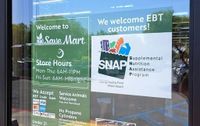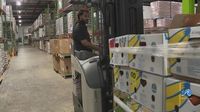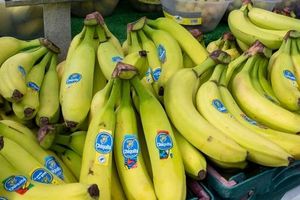Across the United States, millions of families are bracing for a wave of changes to the Supplemental Nutrition Assistance Program (SNAP) that threaten to reshape how low-income Americans put food on the table. The impact of these federal budget cuts, set in motion by the recently enacted "Big Beautiful Bill," is rippling from New York City’s bustling neighborhoods, through the school cafeterias of North Carolina, to the agricultural heartlands of California’s San Joaquin Valley.
On Wednesday, August 13, 2025, New York City officials sounded the alarm about the looming consequences for the city’s Asian American and Pacific Islander (AAPI) community. Congressman Dan Goldman, Assemblymember Grace Lee, and Council Member Susan Zhuang gathered to highlight how the cuts—estimated to remove about 300,000 New Yorkers from SNAP—pose what they called "a direct threat" to vulnerable residents and the local economy. According to the nonprofit Robin Hood, nearly one in four Asian New Yorkers lives in poverty, almost double the rate for white New Yorkers. These numbers are more than statistics—they represent families, seniors, and children who rely on SNAP not just for sustenance, but for stability.
"These cruel cuts will not only take food away from vulnerable families, they will also hurt many AAPI small businesses that rely on customers using SNAP and other food assistance benefits to buy groceries," Goldman stated, as reported by local media. The economic stakes are significant: every dollar in SNAP generates more than $1.50 in local economic activity, propping up small groceries, food banks, and jobs in neighborhoods like Sunset Park and Bensonhurst, where the program is a lifeline. Council Member Zhuang noted, “All businesses are impacted, and our underrepresented AAPI community is being left behind.”
But the pain doesn’t stop at benefit cuts. About 51,000 Brooklynites have already been hit by SNAP fraud, further straining households and food providers. Zhuang emphasized the urgency: "We see SNAP fraud in our community every single day. The federal government must take responsibility to address this, invest in stopping scammers, restore funding, and protect families." Seniors on fixed incomes, she added, are struggling now more than ever, especially as tariffs and rising costs squeeze budgets.
Meanwhile, in North Carolina, the stakes are just as high, especially for children. On August 15, 2025, local news outlets reported that pending SNAP reductions could end the automatic eligibility of students for free or reduced-price school meals, starting in 2026. For many families, SNAP is the gateway to these crucial programs. Amy Beros, president and CEO of the Food Bank of Central and Eastern North Carolina, explained the consequences: "Meaning more paperwork, potentially not being qualified any longer for those meals." The North Carolina General Assembly has attempted to soften the blow by allocating $3 million annually for school meal copays, but Beros called it "just enough to maintain the status quo."
Food insecurity in North Carolina is already dire. One in every five children faces uncertainty about their next meal, and food banks are reporting a 20% to 50% surge in demand. Beros put it bluntly: "We certainly can’t expect kids to go to school and pay attention and learn and be able to advance if they’re worried about where their next meal is coming from." Governor Josh Stein has championed the idea of free universal breakfast for students, urging lawmakers to provide funding, but the future remains uncertain as federal support wanes.
California’s San Joaquin Valley, an agricultural powerhouse, is also feeling the squeeze. According to the Central Valley Journalism Collaborative, as of August 16, 2025, more than 950,000 people—about 22% of the region’s population—receive CalFresh, California’s version of SNAP. The average monthly benefit for Valley families is $365, or roughly $185 per person, falling far short of the $994.50 the USDA estimates is needed to feed a family of four each month. The "Big Beautiful Bill," signed into law by President Donald Trump last month, slashes $287 billion from SNAP over the next decade. The Congressional Budget Office estimates that 85% of these cuts will hit the lowest-income households.
The new law brings a slew of policy changes: work requirements now extend up to age 64, not just 55, and parents with children as young as 14 must meet these requirements to maintain eligibility. Veterans, homeless adults, and young adults who aged out of foster care are also subject to these new rules, losing previous exemptions. Moreover, eligibility is now restricted to U.S. citizens and lawful permanent residents, excluding some legal immigrants, including asylum seekers and survivors of domestic abuse or human trafficking.
States will soon be required to shoulder a portion of SNAP costs themselves, with a sliding scale based on payment error rates, starting in 2028. Kim Johnson, head of California's Health and Human Services Agency, warned, "We’re talking about 5.5 million low-income individuals in California, 3.3 million households accessing food they need to thrive. The proposals result in a loss of that access, benefit levels that will not keep up with the ever-increasing cost of food, (and) will limit access to nutrition education services that support healthier food choices." She called the changes "immediate threats to the well-being of millions of Californians."
The California Association of Food Banks echoed this alarm, stating, "This legislation breaks with decades of federal commitment by shifting billions in costs to states, reducing food assistance for millions of families." The organization noted that for every meal a food bank provides, SNAP delivers nine, underlining the impossibility of charities filling the gap. Stacia Levenfeld, CEO of the California Association of Food Banks, said, “California food banks are already stretched thin … There is no way that food banks can make up for the amount of food households would lose as a result of these cuts to SNAP.”
For those on the ground, the numbers are sobering. In July 2024, $171.6 million in SNAP benefits reached about 468,000 households in the San Joaquin Valley. Yet even the maximum benefit leaves families short, with the Urban Institute estimating a gap of 51 cents to $1.09 per meal, depending on the county. Local officials are anxiously awaiting guidance from the U.S. Department of Agriculture and the California Department of Social Services on how to implement the new rules. Gavin Harrinson, a senior staff analyst in Fresno County, said, “Changes to CalFresh eligibility and benefits as a result of (the bill) are still pending guidance … benefits will continue as is until such guidance is provided.”
Back in New York, the effects of these federal decisions are already being felt at the local level. Small businesses, food banks, and families are preparing for harder times. As Council Member Zhuang summed up, “Our underrepresented AAPI community is being left behind.”
From coast to coast, the debate over SNAP cuts is more than a budget line—it’s a question of who gets to eat, who gets left out, and what kind of safety net America is willing to provide for its most vulnerable citizens. As the new policies roll out, families, advocates, and officials alike are bracing for a difficult year ahead, hoping that community, compassion, and perhaps a change in political winds might soften the blow.






